During the recent session of summer school, I had a small group of five students who signed up for my orthography class. Two had just spent a school year studying orthography with me and three were new to it, but would be studying it in the fall. I thought you might like to see the kind of explorations we did considering the experience levels of the students.
For the first few days, they helped me finish a video I had begun working on before the school year ended. I shared a power point I had created explaining how the days of the week were named. Next we read the script I had written and talked about a time when Latin was spoken. It was when the Germanic people traveled and traded that they became aware of how the Romans named the days of the week. The Germanic people were intrigued. They decided to adopt what the Romans were doing, but made some changes to reflect their own culture. Here is the video we created:
This was a great introduction to orthography because I could acquaint my new students with some basic truths about English spelling.
~ We began with common words that are familiar to my students, and yet whose spelling they never questioned before. It was the opportunity to present the truth that words are spelled the way they are for a reason. Spelling is not random and nonsensical. A spelling represents the word’s meaning. This is such a basic truth regarding spelling, and yet it is one that is incredibly hard for people to believe. From early on we are told that every letter represents a sound and that when we blend those sounds, we are reading a word. While that might have a surface appearance of what we are doing, it just doesn’t work to explain spelling and reading beyond words like pat and dad.
There is a quote that I have always loved. “If our brains were simple enough for us to understand them, we’d be so simple that we couldn’t.” (I’ve seen it attributed to several people, but most often to Ian Stewart.) I think I love it because when I ponder it, I feel encouraged to look at a human brain as this amazing organ that man may not ever completely understand. We seek to understand the brain, of course, because seeking understanding is part of our human nature, but all the while we stand in awe of it too. In a similar way, I see language as substantial, as beautiful and as amazing as, say, a brain. It is something we seek to understand, but may not ever completely understand because it was created by a vast collection of human brains across time! It is the legacy of the human race!
This is not to say that it can’t be understood. It can. But that doesn’t happen — hasn’t happened — by people who have tried to simplify the instruction of reading. That simplification (every word has a letter/sound correspondence, and if we just blend those sounds together, we will be able to read the word) does not hold true for the majority of words in our language. And teaching beginning readers that spelling and words are all about pronunciation is the biggest problem of all. There is just so much more to it. There is meaning. MEANING! Instruction in reading should start with a word’s meaning. From there a child should seek to understand the word’s structure and the morphological and etymological families it belongs to. Then it is time to notice the grapheme/phoneme correspondences. At that point, those correspondences that are affected by the word’s etymology will make sense. At that point, those correspondences that are affected by the word’s morphology will make sense. Once a student knows a word’s meaning and can relate its meaning to its spelling and ancestors, then that student is ready to pronounce the word and read it in context. And because the word’s spelling is now understood, it will be more memorable. It will have staying power. (No guarantees, but at the very least, a student will be able to quickly look up the information on his/her own and refresh that understanding.)
Of course I did not belabor this point with my students, but I did introduce this idea and show them that the days of the week were named as such to represent meaning. It is no longer frustrating to try to remember the spelling of Wednesday if instead you can imagine the Germanic Chief God Woden and think of it as being called “Woden’s Day”. Change the <o> to an <e> and flip the <en> and you have “Wednesday”. It was difficult to pronounce both the <d> and <n> once the <en> was reversed, and in time the <d> was no longer pronounced. It was left there, though, to remind us that this day was Woden’s Day.
~ Another great reason to start with learning about the days of the week is that it gave the students the opportunity to understand that Modern English is directly descended from Old English. When the students compared the days of the week as written in Old English, Modern English, Swedish, and German, they could see similarities in spelling and meaning. Seeing the same days written in Latin and then in some of the Modern Romance languages like Italian, French, and Spanish, they could see the similarities in spelling and meaning among these languages as well. At this point, the students are presented with the idea that many of the languages we are familiar with derived from Proto-Indo-European. You see, in the late eighteenth century, Sir William Jones noted similarities between Sanskrit (an ancient language of India), Ancient Greek, and Ancient Latin. He proposed that the similarities were because of a shared ancestral language. He called that ancestral language Proto-Indo-European (often abbreviated as PIE). Although there is no direct evidence (writing samples) of this language, experts in this field have been able to use linguistic reconstruction to suggest likely pronunciations of PIE roots and their meanings. It is important to keep in mind that these PIE roots are suggested reconstructions. That is why you see an asterisk next to the PIE root in an Etymonline entry.
If we think of the languages using the analogy of a tree, it might look similar to my drawing below. My goal in drawing this was to point out that the Germanic languages would have been on a different branch than the Romance languages, but that they would both have had Proto-Indo-European at their roots. Other than that, this drawing is NOT complete. It is meant to suggest the idea of a language tree, and to point out the idea of different branches in the bigger idea of a language family tree. During the school year, I will find a reliable and more accurate language tree to share with my students.
New Day – New Activity
I began by reading an article that I think is interesting. HERE is a link to it. It is called “Why is the ‘mor’ in ‘Voldemort’ so evil-sounding?” It began by naming some well known fictional villains. There’s Voldemort, Professor Moriarty, Morbius, Mordred, and Dr. Moreau. But what is it about that <mor> found in these names that links them together? Before I went further, we stopped to check out a few things at the Online Etymology Dictionary.
I had my students look up some familiar words with this <mor> spelling. Notice that I’m not calling this a base element. I don’t really know what the connection is yet. I only know that this letter string appears in names given to some villains.
As the students searched and then read the entries at Etymonline, I recorded their information on the board. In that way we could all see the basic information and make observations as they came into our thoughts.
Morbid
<Morbid> was first attested in the 1650’s. It is from Latin morbidus and morbus “disease, sickness, illness, ailment”. Perhaps it is connected to the root of mori “to die, looking like death.” It is from the PIE (Proto-Indo-European) reconstructed *mer “to rub away, to harm, to die”.
Wow. That really got the attention of the students! One of the mentioned villains is Morbius. That spelling reminded us all of the spelling in morbid. The article mentions three villains named Morbius. The first is Dr. Michael Morbius whose alter ego is something like a living vampire. He is featured in Marvel comics as an enemy of Spider-Man.

Another is the Time Lord war criminal known as Morbius from the British science fiction television series, “Doctor Who.” For his crimes, he was captured and executed, yet he survived.

The third is the Morbius who is an antagonist in The Forbidden Planet, a 1956 movie. Morbius is a scientist who has been stranded on a planet for twenty years.

Mortal
Next they looked up <mortal>. It was attested 14c. and is from Old French mortel “deadly, doomed to die, destined to die, deserving of death,”and before that from Latin mortalis “subject to death.” This word too is from the same PIE reconstructed root *mer! That was interesting! The idea of “deserving of death” brought about a fascinating discussion. As a way of further understanding this word, I shared a quote from my favorite Dicken’s story, The Christmas Carol. It is spoken by Scrooge when the Ghost of Christmas Past is about to take him out the bedroom window. Scrooge says, “But I’m a mortal and liable to fall!” He is explaining that as a mortal he is subject to death should he fall from this height!
Murder
Next we looked up <murder>. It was attested 13c. and was Old English morðor (plural morþras) “secret killing of a person, unlawful killing, mortal sin, crime, punishment, misery”. Even though the modern spelling is <mur> and not <mor>, we found that in Old English it was an <mor> spelling. AND again, we found it was from the same PIE reconstructed root *mer! This entry brought about a discussion about a killing being in secret. It was decided that since the murderer doesn’t usually want to get caught, they kill in secret.
The other thing the entry for <murder> brought about was a discussion about the Old English letters eth and thorn.
These are two of at least twelve letters that were once but are no longer part of our alphabet. Since eth appears in the spelling of the Old English word for murder morðor, and thorn appears in the plural spelling of the same word for murder morþras, it makes sense to talk about them and share how they were probably pronounced.
The students were enjoying these connections, and they loved spotting that the connection between all three words was the PIE root *mer “to rub away, to harm, to die”. But it was also pointed out by my two experienced students that we didn’t find a root that became a modern English base element. We found no evidence that <morb> in Morbius was a separate base. We found no evidence that <mor> in Moreau or Moriarty or Mordred was a separate base. But what about <mort>?
As a way to connect our findings to something local, I asked if any of the students had ever been to Lake Butte des Morts which is in our state, but northeast of us. They had, but none of us knew what its name really meant. I looked it up and we found out that the lake was named by French settlers to honor the Native American Burial Mounds that were nearby. The name of the lake means “Mound of the Dead”. Read THIS if you are interested in a brief history of how this name came about. It is very interesting!

Next we looked up words with <mort> and found mortician, mortal, immortal, mortgage, and mortuary. All of them are from the same PIE root *mer “to rub away, to harm, to die!” They are all from Latin and have to do with “dead”. This might explain villain names with the <mort> base, but it doesn’t explain the others. Something else is going on here as well.
At this point we went back and read the rest of the article. We talked a bit about phonesthemes, and talked about how the <mor> might have something to do with that since we didn’t really have evidence of a base shared in all of the names.
Phonesthemes are fascinating to learn about. They are not specifically a spelling. Instead they are a specific pronunciation that carries with it a sense. If we believe that the spelling <mor> might be a phonestheme, it is more accurate to represent it with IPA [mɔr] since IPA (International Phonetic Association) represents pronunciation, not spelling. Another example of a phonestheme is [sn] having something to do with the nose. We hear it in snooze, snore, snot, snout, sneeze, sniff, and more.
This activity was interesting to the students and introduced/reinforced some orthographic truths:
~ Noticing things about words and their spelling is what scholars do. Asking questions is much more important than securing answers. What is important is that we notice things, contemplate them, think about what it is we don’t know, and then to ask questions. In following this order, we identify for ourselves a specific focus for our research and reading.
~ Words have an attestation date. That date gives us an idea of how long a specific word has been in use. The date reflects the earliest date for which etymologists have written evidence of the word being used. The word may have been spoken before that date, but we don’t have anything written prior to that date that includes it.
~ It takes some guidance to become familiar with reading the entries in any etymological dictionary. By having the students read the entries and by me writing the important facts on the board, the newer students had a taste for the kind of information that is there. First we noticed the earliest it had been found in writing. Then we took steps backward in time from there to see the language of origin for the base of the word. Many of the entries include information as far back as the PIE root. We talked about what PIE means, and who the people were who spoke Proto-Indo-European.
~ I was able to introduce the concept of phonesthemes. I didn’t spend a lot of time on it, but it will be slightly familiar when they hear me speak of it later in the year. To me, a phonestheme is an unexpected yet delightful aspect of our language!
New Day – New Activity
I started by showing a short video in which students speak off the cuff about orthography. Here it is:
As I had hoped, a discussion followed. The two students who had just finished a year of studying orthography were in this summer school class because they had enjoyed it THAT much! They shared some of the words they had investigated during the year. Their favorites were the words they could choose on their own. No surprise there!
At one point I told about a girl in a previous class who had found out that the word <nice> had drastically changed over time. It wasn’t the spelling that had changed in the time since the 13th century, it was the meaning. You see, if someone called you nice back then, they were calling you stupid or foolish. Slowly that sense and meaning changed. It wasn’t until 1830 that it was being used to mean kind and thoughtful. Isn’t that a surprise? The students thought that was very interesting, so I asked them to think about <terrific>.
I wrote it on the board and instead of asking the students to hypothesize a word sum (something I usually do), I asked them to think of other words that look like they might be related in spelling. The newer students chose to get out Chromebooks and look online at Neil Ramsden’s Word Searcher. The older students grabbed dictionaries that I had nearby. They wrote the words on the board as they found them. Here is the list of words they accumulated:
terrine terrific
territorially terrorist
terrestrial Terraria
terrazzo terror
terrapin terrarium
territorial terracotta
terrible terrorize
terrain terrace
terrorism terra
terraform terracing
At this point I asked the students to take a step back and look at this group of words. I said, “They all look like they could be related. We see the same <terr> spelling in every word. How about a shared sense and meaning? Are they similar in their meaning?”
One boy began by pointing out that terrorist and terrain did not mean the same thing. He knew that the terrain had to do with land and a terrorist was a person who committed violence. Someone else added that a territory also had to do with land, but terrible was something that was bad. Hmmm. It was time to look up <terrorist> and <terrain>. We needed some historical information to sort this out. The Etymonline entry for <terrorist> led us to <terror>:
The experienced students recognized that terrere was the infinitive form of a Latin verb. As such, they knew they could remove the Latin infinitive suffix <ere> and identify the root that eventually became the modern base element <terr> that we see in terror, terrorist, terrorism, and terrible.
From Etymonline:
This word comes from French terrain “piece of earth, ground, land”. If we continue following its trail, the furthest back we can go before its PIE root is Latin terra “earth, land”. This is where the modern base we see in terrain, territory, territorial, and territorially came from. It is pretty clear that we have two very different base elements here!
The next task was to find out which word was related to which base! The students went back to poring over their resources. Everyone was busy in that room. Each was looking up a different word and speaking up to let me know whether to underline a word in black (<terr> “earth, land”) or green (<terr> “fill with fear”). It was kind of funny that one of the last words to be looked at was the one we began with — <terrific>!
What an interesting story this word has!
From Etymonline:
It is only since 1888 that <terrific> has had the sense of “excellent” associated with it. In the two hundred years of its existence before that it meant to cause terror or to make something frightening. How terrific is that?
Below you can see which words ended up underlined in green and which were underlined in black. I told the students at this point that perhaps it would have been easier to organize our lists if we had written them on post-it notes.
This activity was engaging and interesting to the students and reinforced some of the things previous fifth graders liked about studying orthography (as mentioned in the video):
~ When you investigate one word, you find a whole bunch more that are related. You aren’t just learning about a single word. You are learning about a base element that in some cases is found in many words. The fun in finding these families is to recognize how they are all related in meaning and then to identify their spelling differences by working out the word sums. For example, compare these word sums:
terr + or –> terror
terr + or + ist –> terrorist
terr + or + ism –> terrorism
terr + or + ize –> terrorize
Can you see how spelling becomes less stress-inducing when a student sees the commonalities in a word family’s structures?
~ This activity illustrates how involved and engaged each student will be. They get caught up in the search for understanding! Being able to make sense of a word’s spelling is something they didn’t know they could do, and it brings about an excitement! Even as an adult, I admit that I get giddy sometimes when I make sense of a spelling or word’s meaning that I had never previously stopped to wonder about.
~ This activity also brings out a very important point. Just because two things look alike, it doesn’t mean they are! The chances are that when these students come across a word that has a <terr> base, they will stop to think about how its being used and which base it really is. They will question and think about the word and its meaning when they probably wouldn’t have before. Isn’t that exactly what we want our students to do?
New Day – New Activity
A tragic explosion had occurred in a nearby town on the previous day. It was certainly something that was being talked about by the students and adults in our community, on the news, and on social media. I decided it might benefit the students to investigate the word <explosion> and understand it better. I wrote it on the board and asked students to hypothesize its structure. (The boys who had experience with writing out word sums put a circle around their plus signs.)
The first thing we noticed about the three hypotheses was that there was a consensus that <ex> was an element. The boys knew it was a prefix. I then asked for proof. By that I meant that I wanted three words that had an <ex-> prefix. They thought of:
It was also agreed that <ex-> had a sense of “outwards”. The experienced students remembered studying exosphere last fall and that it was the outermost layer of the atmosphere.
Next we went back to the hypotheses and noticed that two of the three listed <ion> as an element. It wasn’t a surprise to me that my experienced students knew the <-ion> suffix. The newer student was no doubt pronouncing the word syllabically and figured the suffix to be <sion>. To help the new students see for themselves that <-ion> rather than <sion> would be the suffix, I again asked for proof. I wanted three words with an <-ion> suffix.
We read each of these with and without the <-ion>. I specifically wanted to know if the students felt that <adopt> and <adoption> shared a sense and meaning. As they read them, they could see that the <t> could not be part of the suffix because it was part of the base. We looked at <act> and <action> in the same way and noticed the same thing. The words <interact> and <interaction> were like <act> except for the sense of “between” added by the prefix <inter->. But as far as the suffix, it had to be <-ion> and not <-tion>. The last set was <emote> and <emotion>. I let the experienced students explain that the base here is <mote> “move”. The use of <emote> as a word is not real common, so the newer students hadn’t heard of it before. The verb <emote> means to show emotions.
Now the question came up, “Do we ever see <explose> by itself? Great question! I asked everyone to keep that question in mind as we continued our investigation. Now that we had identified the prefix and suffix in the word sum for <explosion>, we were ready to look at the base element. The students were all convinced that the hypothesis that was most likely was:
One of the experienced students pointed out the need for the final potential <e> on the base. I didn’t really address it much at that moment because I know how often we will see it and talk about it in the new school year. There were plenty of unfamiliar things being presented to the new students and I saw no need to fully discuss every single one. It was time to go to Etymonline to read the entry for <explosion>:
This entry had so much to offer towards our inquiry! Notice that in the 1620’s it was used to mean “action of driving out with violence and noise.” No surprise there, but as we go back further in time, we see that as Latin explosionem it meant”a driving off by clapping.” By clapping? What kind of clapping? It’s time to follow the recommended link to <explode> to find out more.
Originally this word had a theatrical use. Actors could be driven off the stage by clapping to show approval or hissing to show disapproval. Notice that the Latin word that explode derived from was plaudere “to clap the hands, applaud.” How about that? The next time you are at a theatrical performance that has just finished, think of how the applause is like an explosion!
The next thing I did in guiding along this investigation was to write <explosion> on the board and <explode> next to it. I asked, ” If we believe the base of <explosion> to be <plose>, what do you think the base of <explode> is? Right away three voices called out <plode>. I wrote those two bases side by side. As soon as I did that, one of the experienced students called out, “twin bases!”
“What makes you say that?” I asked.
“They have different spelling, but they share meaning and come from the same root.”
“Bingo!”
I asked each student to choose either <explosion> or <explode> and find other words in the word’s family. Here is what was found:
We read through each list discussing the words to make sure everyone understood how each word could be used in a sentence. As we were doing that, we also paid attention to the suffixes used. It was noticed that words that had <plose> as a base were followed by either an <-ive> suffix or an <-ion> suffix. In some cases there were other suffixes added onto those, but those were the only two that immediately followed the base. No one found a word in which the <plose> base was NOT followed by some kind of suffix. This answered our earlier question about whether or not <explose> was a word on its own. We don’t think so. We left it phrased like that because I want my students to have an attitude of being open to other evidence should we find it at some later time.
When looking at the suffixes used with <explode>, we noticed that they were the familiar <-s>, <-ed>, and <-ing> suffixes that we see with so many words. It was also noticed that the suffixes used with one of these bases, would not be used with the other. We tried to exchange them and just ended up laughing.
The one affix that was used with both bases was the prefix <im-> “into, in, upon”. I wanted to make sure my students understood the difference between an implosion and an explosion, so I found a short video on Youtube of an implosion.
The video shows clearly how the structure falls in on itself. This is a controlled way of demolishing a building. We compared it to this video of an explosion.
This video is interesting because you get to see the explosion in slow motion at around the 2:08 mark. A fair warning if you are showing this to children: one of the men uses a questionable word at 3:18 or so. You may want to preview before you share this. Other than that, this is fascinating to watch.
This activity was a great choice because it centered around a word that was relevant in the lives of the students. Along the way there were several orthographic truths to learn:
~ The students had another opportunity to hypothesize word sums. One of the boys smiled and said, “Looking at a word and deciding what the word sum might be is one of my favorite things!” And as they think about what the word sum might be, they are thinking back to what they’ve seen in other words. They are thinking back to suffixes, prefixes, and bases they know. They are not making wild guesses. They are mentally engaged as they make these decisions about the structure of the word.
~ Having to prove the prefix and the suffix is a great activity as well. It discourages a student from calling the last two or three letters of a word a suffix. If they can’t find any other word with that as a suffix, they have just proven to themselves that it probably isn’t a suffix. It is also an opportunity to think about the sense that an affix brings to the word. What is the meaning sense that <ex-> brings to <expert>, <example>, and <exosphere>? If they have to look at a dictionary to find out, that’s okay. Again, this is part of knowing for themselves what is what with words and their meanings. You should see how dog-eared my classroom dictionaries are. Isn’t that marvelous? I just smile when a colleague complains that his/her students don’t use dictionaries. I really believe that my students have a need and a desire to know, and therefore, use the dictionaries on their own, asking dictionary navigation questions when they need to.
~ With this investigation, some students were introduced to the notion of twin bases and some had that notion reinforced. What makes <plose> and <plode> twin bases is the fact that they do not share exact spelling, yet come from the same Latin verb, carrying the same denotation “a driving out by clapping”. Remember that it was after the 1660’s that it also had a sense of driving out with violence and noise. During the school year, we will more specifically address twin bases, and the students will investigate a Latin verb in small groups.
~ The base element in a word carries the main sense and meaning. The affixes may alter that sense as they did in this situation. An explosion is different than an implosion in important ways. The prefixes determine that difference with the sense they bring to the base. Being able to see those difference in the videos I found also makes the sense that these prefixes represent easier to remember.
Conclusion
Every day the students remarked that the hour we spent together went by incredibly fast.
“It’s really time to go already?”
“How does that happen so fast? Our time’s up ?”
“Awww. Really? Class is over?”
And then as they packed up they let me know what they thought about studying words.
“This is so much fun! What are we going to do tomorrow?”
“I loved it today. Can we choose our own words to look at tomorrow?”
“Thank you. I had no idea it would be this much fun!”
The students don’t have to understand every bit of what they are being shown. They should not be expected to have memorized any spellings at this point. I am letting them discover that there is much about English spelling that is interesting. They are beginning to understand that words have structures and understanding that structure helps us get to the heart of the word which is its base element/s. Once we know its base, we can find out the word’s main sense and meaning and also learn this word’s story. That story and the connections we begin to see between words is what keeps us investigating. It is what keeps us asking questions. It is what brings out the true scholar in each of us. Children are no different that adults in this respect. Once they believe that they CAN understand English spelling, they will think about words wherever they are and in everything they do!

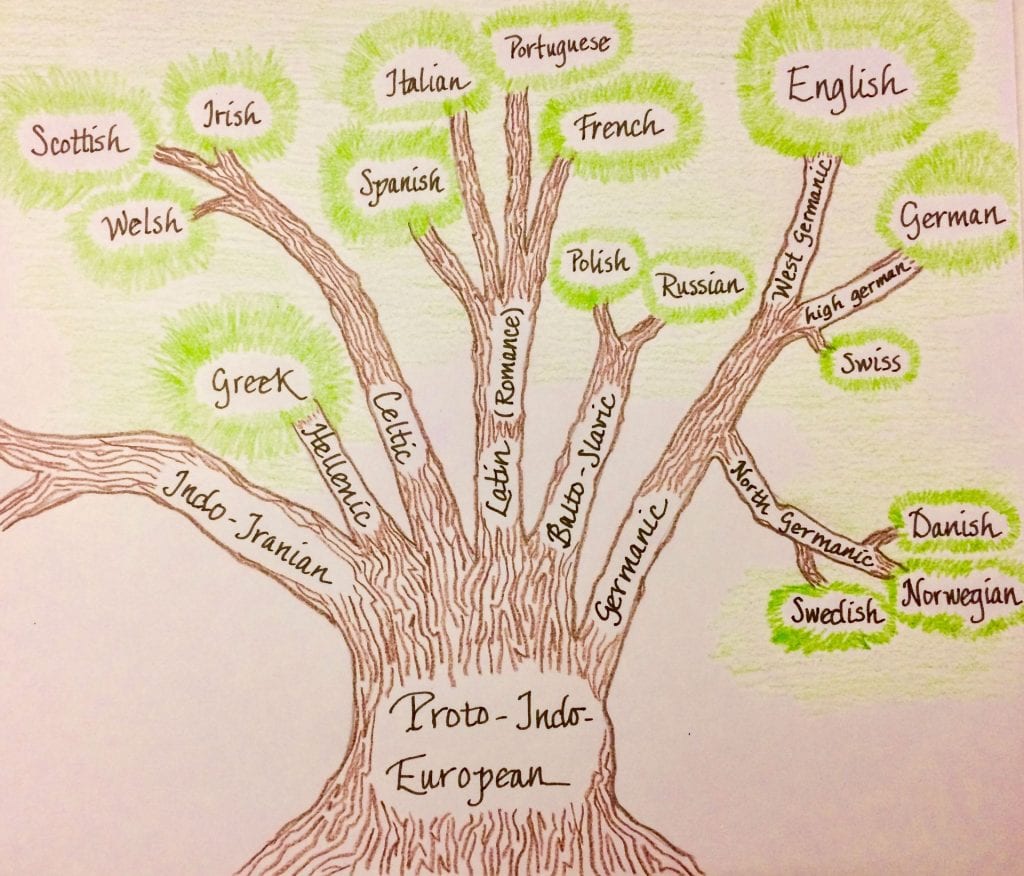
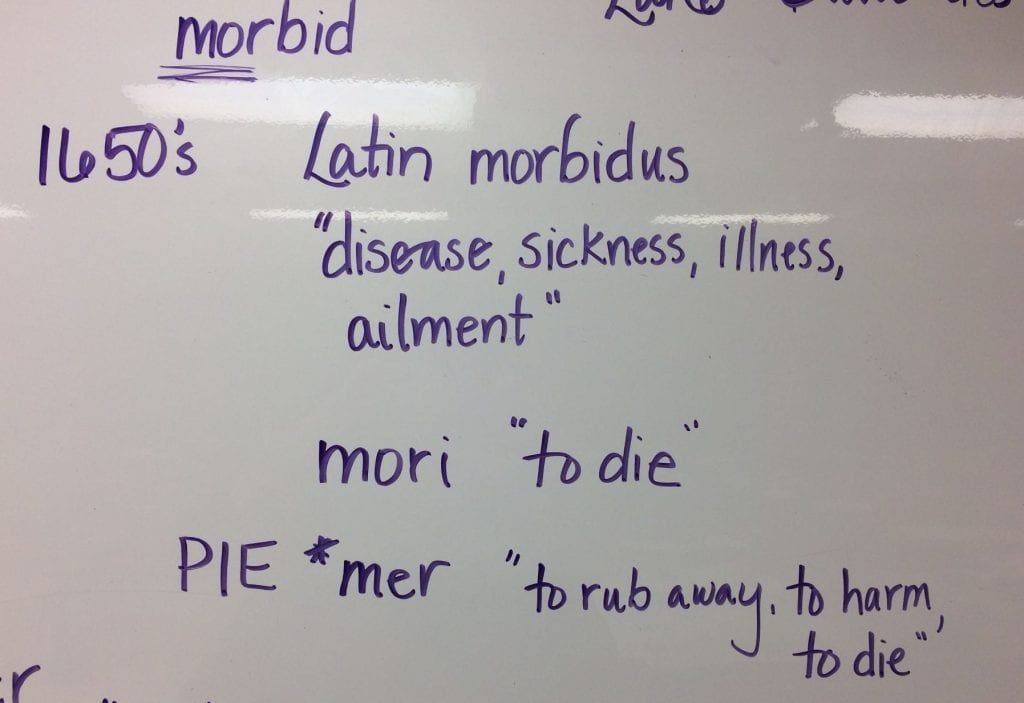

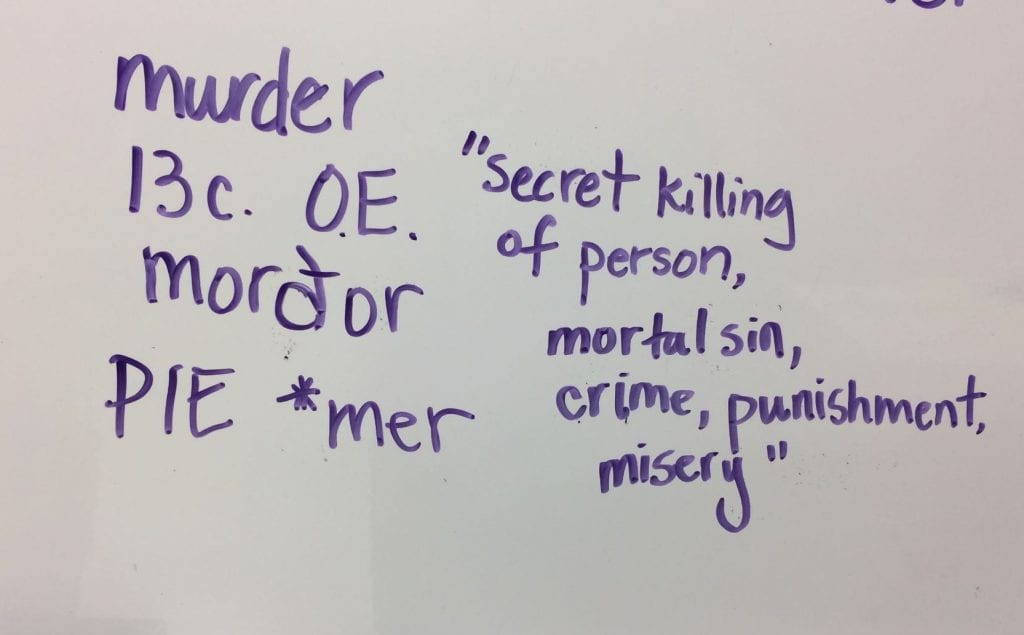
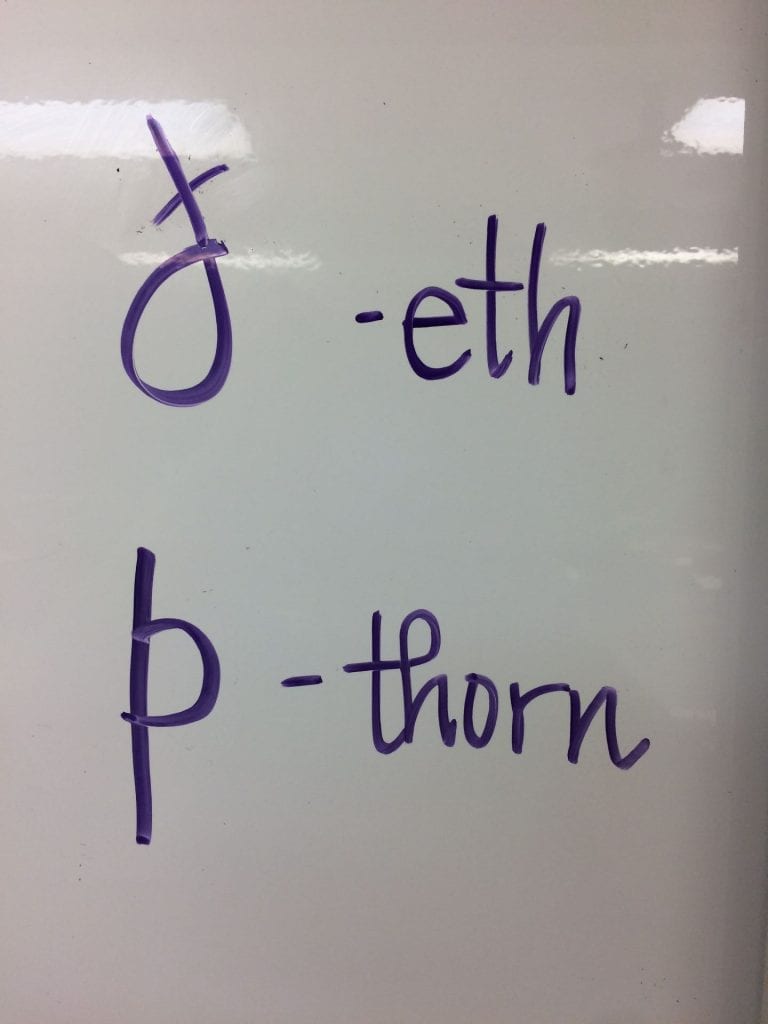





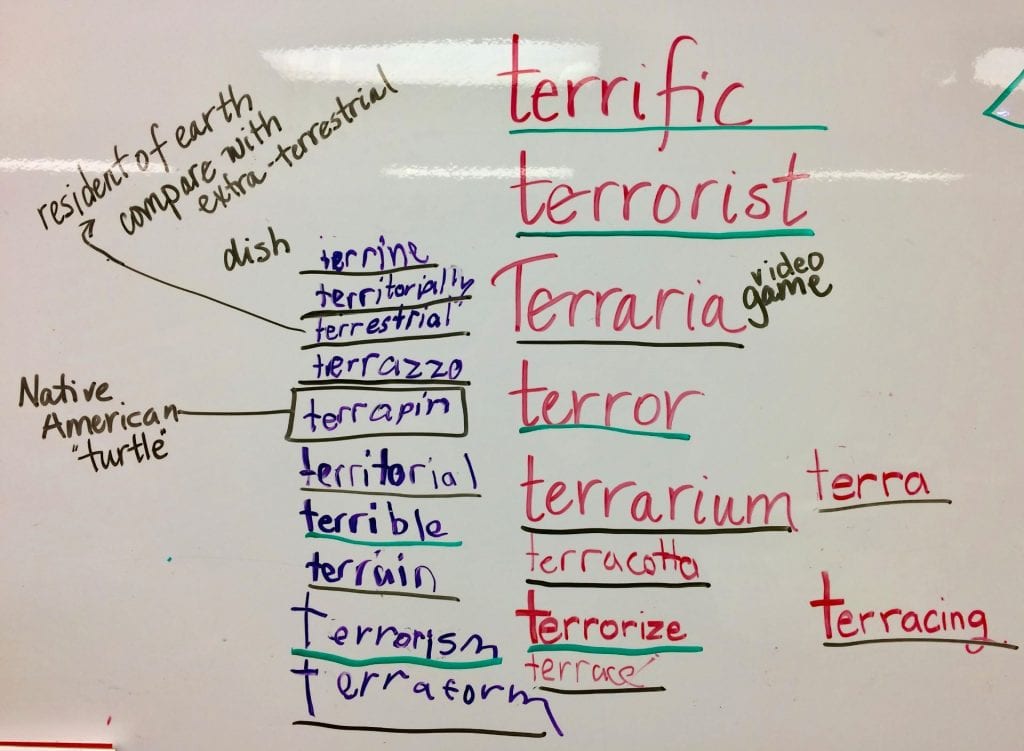
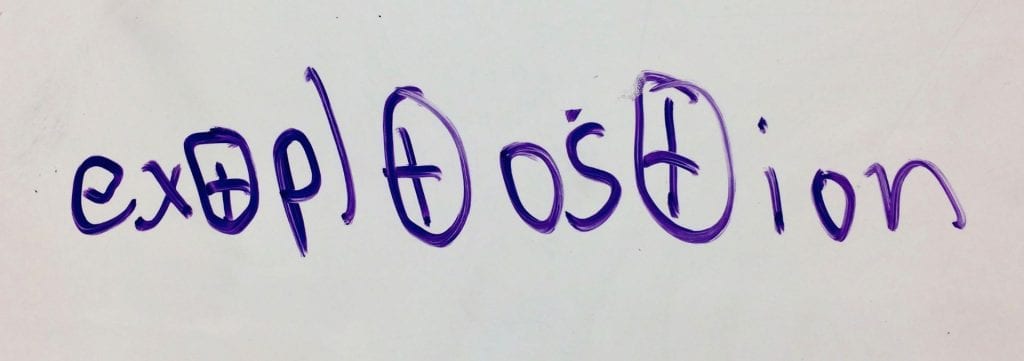


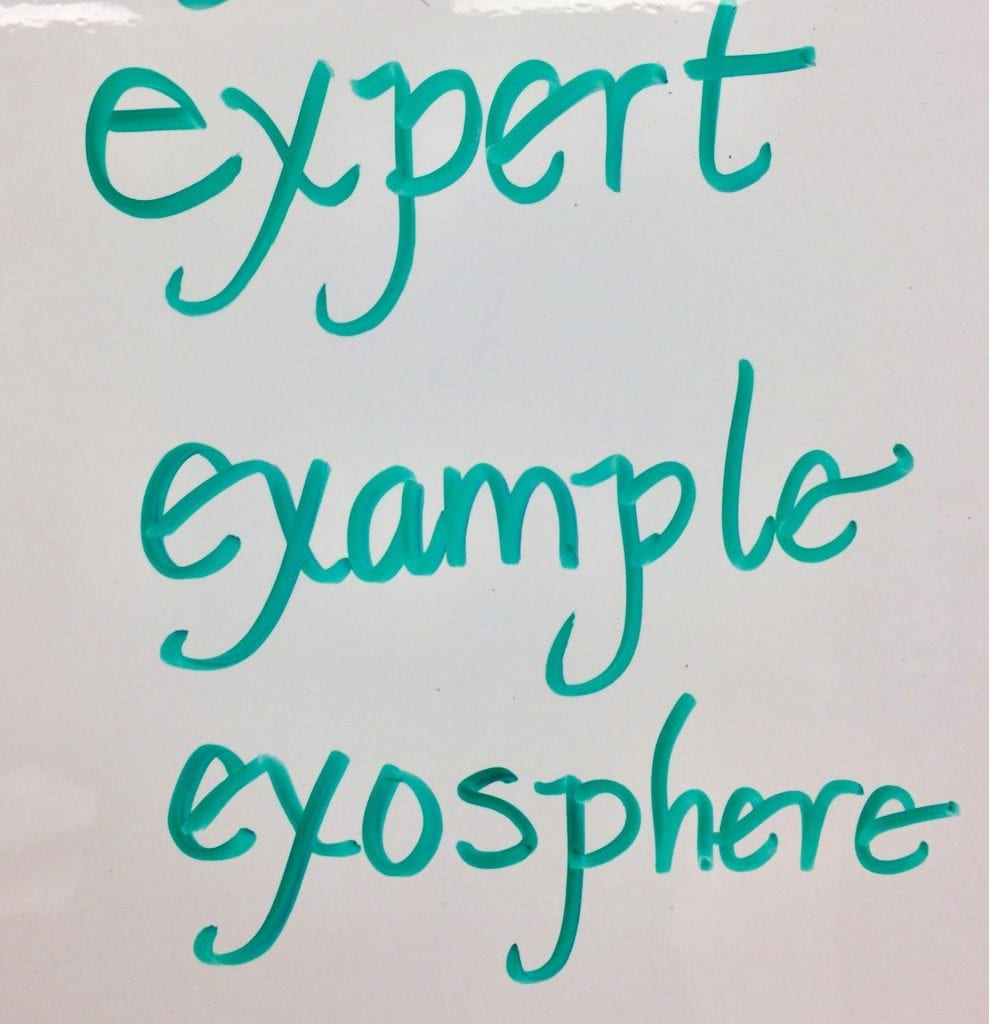
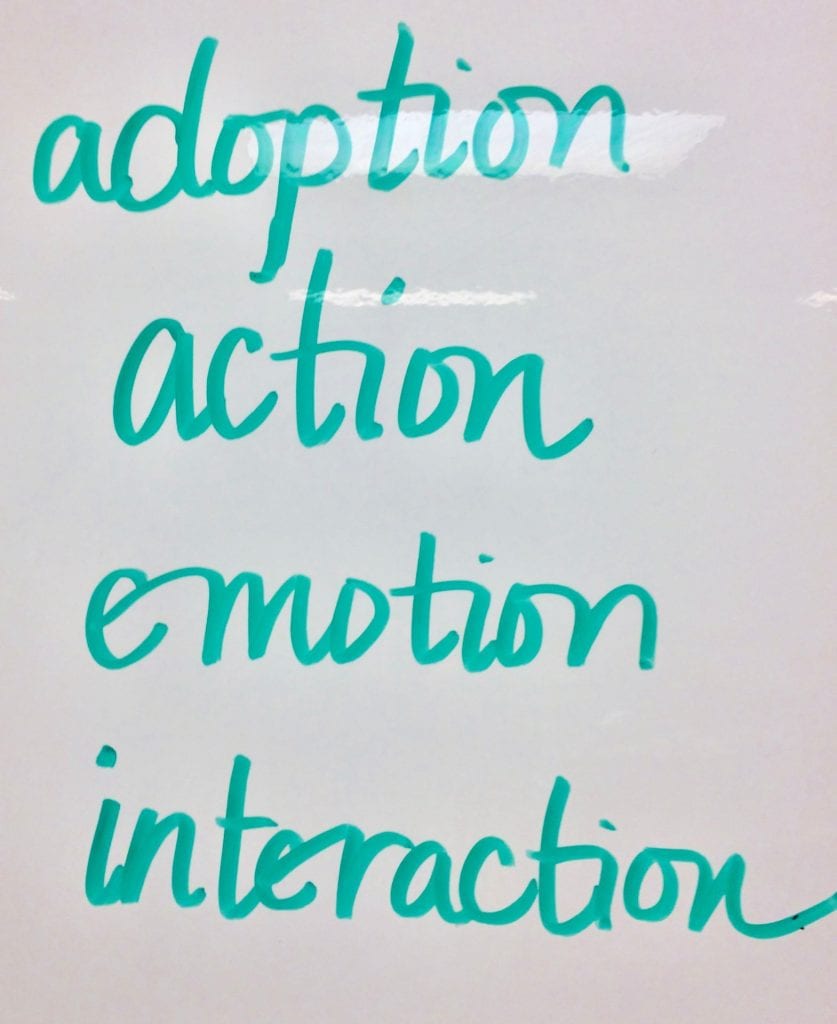


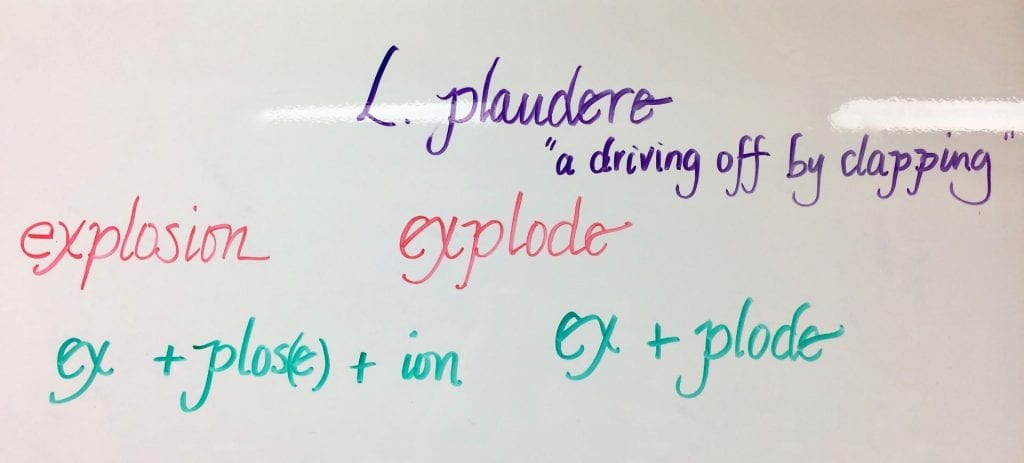
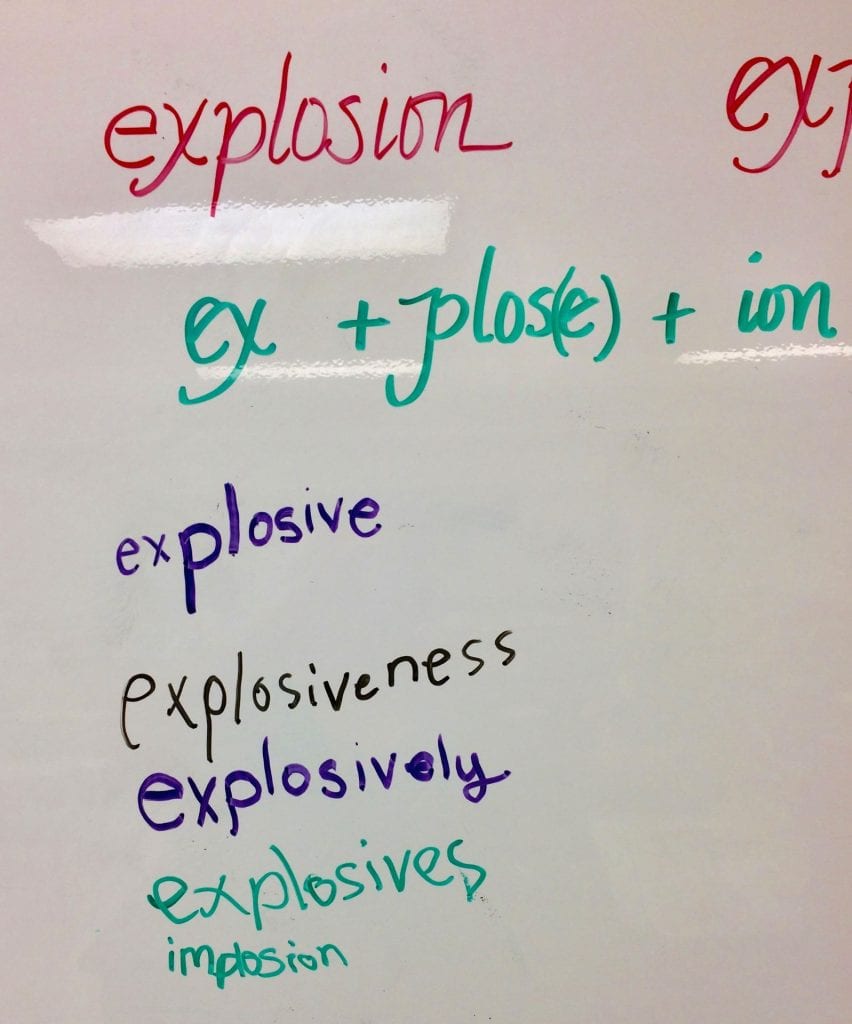
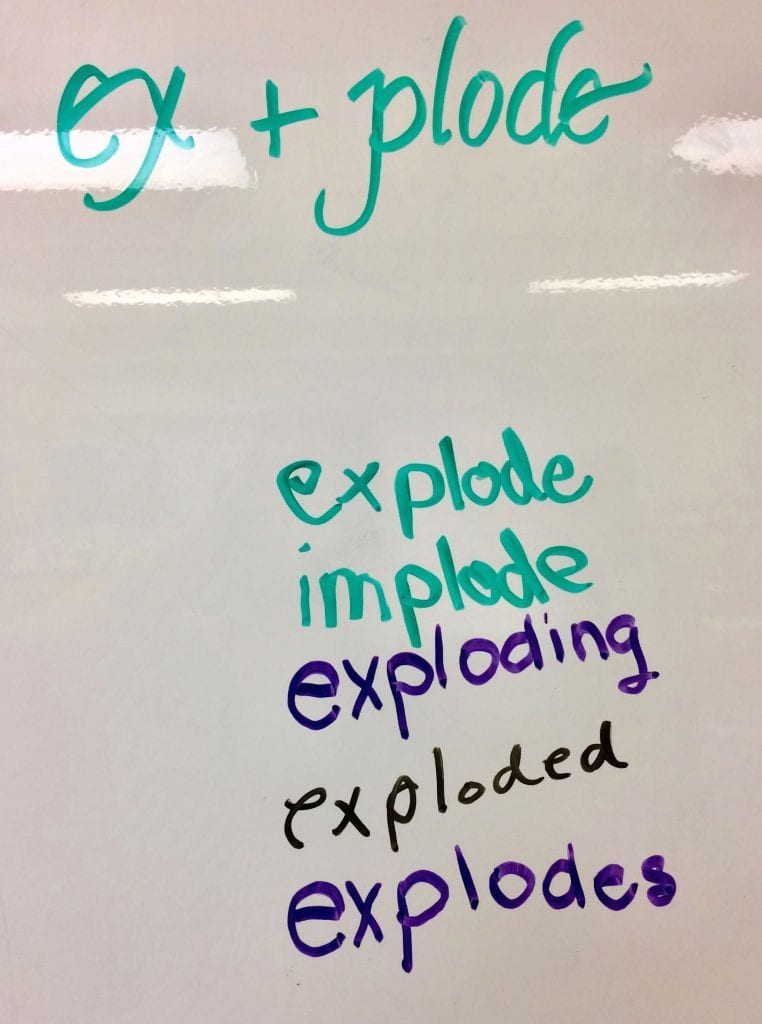
The best part of studying words in this way is that play-by-play lesson planning is not necessary. I reinforce the key principles of SWI and let the students discover how reliable our spelling system actually is for themselves!
My job is to point out things that I find interesting – that I want them to think about. I help them find reliable resources. Sometimes we read together and sometimes they are independent in their searching. During the summer I do not formally assess to see if, say, they know the suffixing conventions. It is time to nurture that excited feeling one gets when the reward for learning is personal joy!
My district offers both remedial and enrichment courses for four weeks each summer. The last couple of summers I have offered orthography, Real Script, read aloud, and Ukrainian Egg decorating. Students choose the classes they want to take.
What an incredible journey studying words takes us on!
Did you offer this summer study privately or did your district offer it?